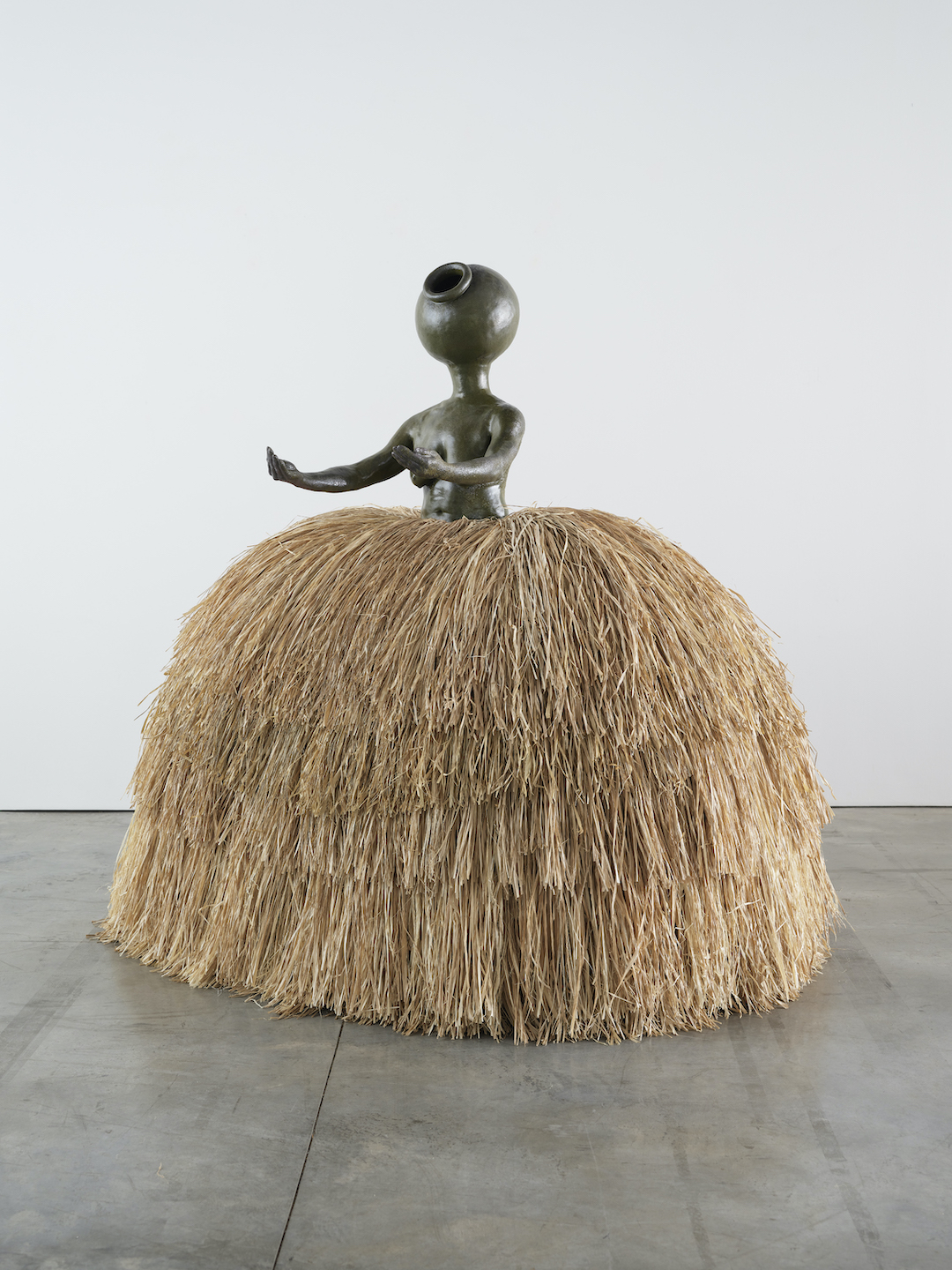
Simone Leigh, Cupboard IX, 2019. Stoneware, raffia, and steel armature, 78 × 60 × 80 inches (198.1 × 152.4 × 203.2 cm). Acquired through the generosity of Bridgitt and Bruce Evans and Fotene Demoulas and Tom Coté. Courtesy the artist. © Simone Leigh
Simone Leigh’s work in sculpture, video, installation, and social practice addresses tensions of visibility and agency for Black women. As a sculptor trained in complex techniques—such as salt-fired stoneware and lost-wax casting—Leigh works predominantly in ceramics, drawing on vernacular traditions of the American South, Caribbean, and African continent. Her work harnesses what she calls a “creolization of forms,” combining a variety of references from the architectonic forms of western Africa to the ceramic art of so-called face jugs, which were produced by Black artisans in Edgefield County, South Carolina, roughly between the late 1850s and the 1880s.
To realize large-scale sculptures such as Cupboard IX, Leigh handworks raw material at life-size scale, fusing elements of the body with domestic tools such as jugs or pots. The figure in Cupboard IX—a faceless head and detailed torso with outstretched arms, posed in a gesture of care or address to the viewer—sits atop a steel support covered by raffia (a fiber harvested from raffia palm trees that Leigh cuts by hand). This raffia skirt and its voluminous structure riffs on notions of femininity, motherhood, and fashion, as well as gathering spaces or dwellings. With these numerous formal and historical references, Leigh, who names Black women and femmes as her audience, invests her work in what she sees as “a tradition of thinking about the status of women by associating the body with the idea of a dwelling, refuge, container, tool, even a loophole of retreat.”
2020.01